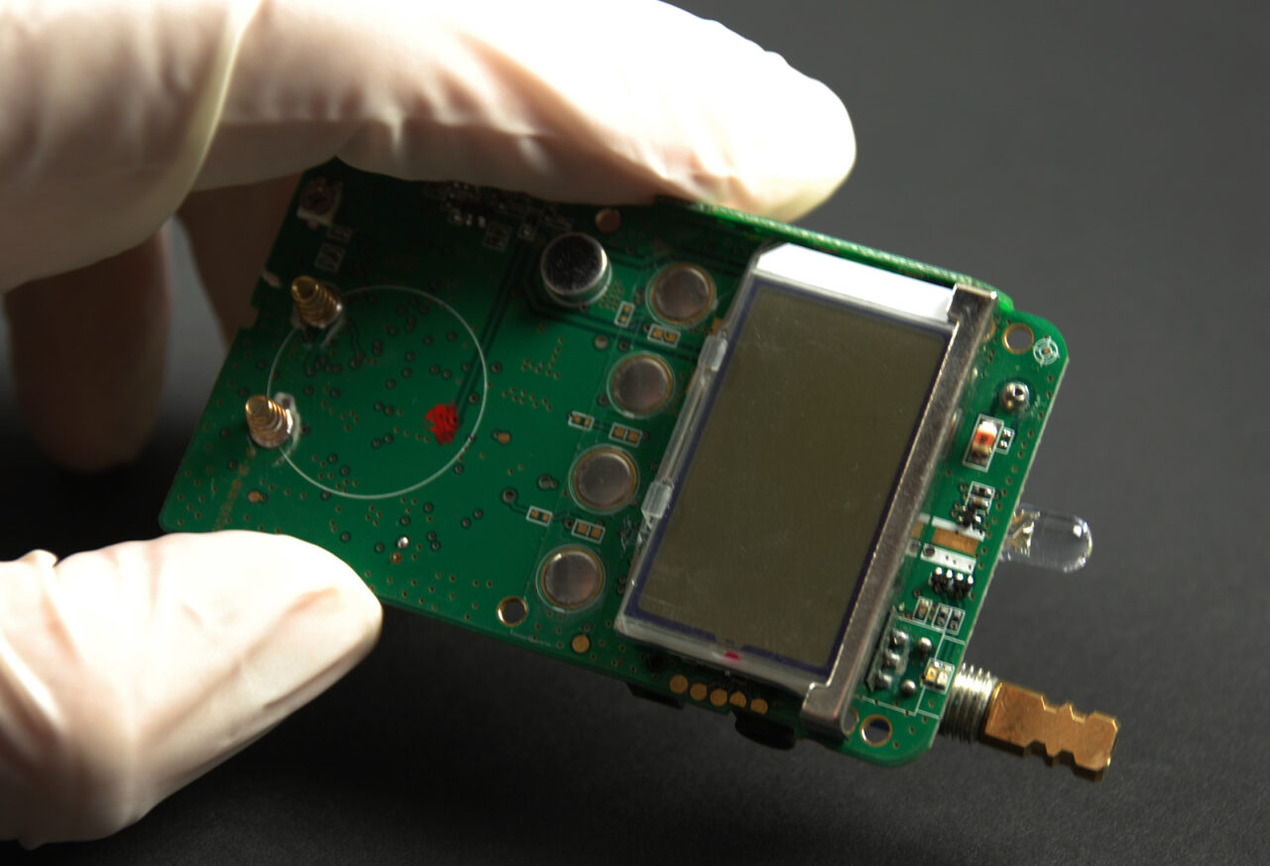
Part 2 of a two-part interview (Read part 1 here)
In the second part of the interview with Dr. Oren Shriki, we look at recent developments in invasive and non-invasive brain technologies and the scientific challenges which have to be surmounted for faster development of better technologies. Dr. Shriki talks about how brain technology might enter into our daily lives. We conclude with a discussion on the ethical aspects of brain technology, which might not be of significant concern at the moment, but have to be kept in mind, as the technology develops.
Applications of brain technology
Monitoring mental states
The first kind of application of brain technology could be for monitoring mental and cognitive states. EEG is a relatively affordable technology, which allows for recording brain activity and extracting measures of cognitive state. These measures can be combined with heartrate, blood pressure, pupil size etc to assess the mental state of a person. The information can be fed into a smartphone, so that users can tell at the end of the day whether they were relaxed or tensed and try to gain a better quality of life.
In general, Dr. Shriki believes that brain technology will move from just treating brain disorders into the healthy population, for stress reduction and preventive medicine applications in the healthy population.
At the next level, brain technology could be used for neural feedback, helping the subjects to control their mental state. Dr. Shriki said that eventually brain computer interfaces (BCI) could allow people to control external devices, like a Jedi.
Brain Computer Interfaces
In BCI technology, there are two major lines of research. One of them focuses on invasive technologies, which require surgery. Arrays of electrodes are implanted inside the brain, so that brain activity can be read with high resolution at any time and robotic arms could be controlled in a ‘pretty amazing manner’. The last decade has seen a lot of progress in this field.
Dr. Shriki said, “Nowadays, you can also provide subjects with some feedback. They can not only control something but also get sensory feedback from the robotic arm. This is quite impressive.”
But invasive technologies are very expensive, require complicated surgery and are accessible to a very limited population, at least for now.
Non-invasive brain-computer interfaces, where an EEG cap is placed on the scalp, have also seen improvement. But they are still not very attractive for the average consumer.
There are pros and cons of current non-invasive BCIs. Users can put them on or take them off whenever they want. But their resolution is relatively poor. Machine learning could help in this context, helping to predict the subject’s intent to a certain extent.
To explain, Dr. Shriki told us about a BCI in his lab, based on the idea of motor imagery. The subject is asked to imagine moving their right or left hand or squeezing the hand.
“We can classify your brain activity and we can know if you imagine moving your right hand or left hand. Then we can control something. For instance, we can use this to control a robot, make it move right or left. But it is limited to only two options. In another context, you might want to turn a certain device on or off. Some kind of machine learning algorithms might try to guess each time what you may like to do. I give you a few options, then you choose among them,” Dr. Shriki explained.

He went on to say that BCI interfaces will become smarter and smarter. They will try to predict your behaviour.
Once BCIs become cheaper and more reliable, we could see them entering the consumer market. People will start using brain-computer interfaces in their daily lives. People will learn to use BCIs. It similar to skill learning, like riding a bike or playing a musical instrument. If you practice more and more on using the BCI you will eventually become better.
Dr. Shriki said, “Currently, people are still not very motivated to practice. But if you could see tomorrow someone controlling very complex behaviour with his brain, you will be like ‘I want to do that too’ and maybe it will give you some motivation to practice.” It is a mutual, simultaneous learning process between the user and the machine.
Brain stimulation
Another potential technology is that of brain stimulation. The deep brain stimulation Dr. Shriki had mentioned earlier is an invasive technology. But there are also non-invasive technologies, using for example magnetic pulses.
Dr. Shriki believes that we are going to see a shift from simple stimulation which is done today to closed loop systems, which means that the stimulation itself is guided by the brain activity. So, the system will measure the brain activity of the subject and then will stimulate the brain in a way to obtain a certain desired goal or to optimise the brain activity. It could help healthy subjects gain more relaxed and meditative states. It could also be used to treat different disorders.
Scientific challenges in the development of brain technologies
Dr. Shriki identified four challenges in the development of brain technology. The first is understanding the neural code. If we want to decipher the intent of subjects, we need to understand the neural code. For instance, understanding how visual information is coded in neuron activity.
Understanding the neural code also requires understanding other aspects. Because the way information is coded by the brain is constrained by how the brain is built. So, the next challenge is understanding brain connectivity. Dr. Shriki mentioned the Human Connectome Project as an initiative in this area. This Project tries to understand the basic patterns of connectivity in the human brain, how different brain areas are connected to one another, in which direction the connections go, how strong they are. “We need to measure brain connectivity on a large scale, as well as small scale and understand how the connectivity changes when you learn things,” Dr. Shriki said.
The third challenge is about neural dynamics. Connectivity constrains the dynamics but still we need to understand the important principles that govern the dynamics of neurons. One such principle Dr. Shriki believes in is the idea of criticality mentioned earlier. There are other principles that govern neural dynamics and people are working on finding them. The Human Brain Project, a somewhat controversial EU Flagship initiative, with funding of over 1 billion dollars, aims to create a large scale simulation of a brain. They do very detailed computer simulations of the neurons and their interactions and try to understand neural dynamics.
But the ultimate challenge, what Dr. Shriki thinks is the most important one, is understanding learning in the brain. He said, “Why don’t we see a brain-inspired chip that is intelligent? Because we don’t understand the brain yet. Because we don’t understand learning in the brain. Learning is what differentiates us from computers. We can adapt very quickly, we learn quickly very complex things. The amazing things that people do with machine learning today, they are still not close to the human brain. In many aspects, they can do what we do an even outperform us. But in many other aspects they are still far behind.”
Overcoming all these challenges is a pre-requisite to brain technology. There are other challenges in translating the understanding to applications.
New technologies are required to measure brain activity and things like brain connectivity in a more elegant way. There are factors to be considered such as avoiding over-exposing the patient to MRIs and the cost of the equipment. The local neighbourhood clinic cannot afford to have an MRI machine.
Better non-invasive technologies have to be developed to improve both spatial and temporal resolutions of the measurement of brain activity. That will substantially improve what can be done with BCIs.
The American government’s BRAIN initiative, started under the Obama administration, seeks to address some of the challenges.
Role of government and policy makers in facilitating the development of brain technology
Dr. Shriki mentioned three concrete actions governments can take. The first is investment in translational neuroscience, to convert advances, findings in basic research into some products with applications. Such grants will help to bridge the gap between academic research and the market. Dr. Shriki said that the grants should be for both academia and the industry to encourage startup companies.
The second point is organisation of meetings around brain technology, bringing together brain scientists and entrepreneurs, people from the industry and investors.
“Scientists are used to regular scientific meetings. We just go there, we give high-level talks to our peers. The idea is to have workshops, popular science talks and one-on-one meetings between scientists and entrepreneurs to try to move to the next level. And move from bench to bedside, in the clinical context,” Dr. Shriki explained. Israel BrainTech is a good example of such a conference.
Finally, the government can promote educational programmes at the level of elementary, middle and high school around brain research. This is not easy but Masters or PhD students in the brain sciences can teach courses during or outside of school hours.
Dr. Shriki added, “Imagine that once a year a high school student receives a popular lecture about the brain. This will create motivation in young students. You can organise summer camps. They can conduct experiments, learn about the brain in a very hands-on manner. I did such summer camps and they were highly successful. I have some students in my lab now who participated in my summer camps.”
Ethics of brain technology
Dr. Shriki has taught courses on philosophy and ethics of science. Often there appears to be inadequate attention paid to these aspects. We asked him about potential ethical issues in brain technology. He described a few important ones.
BCIs could in principle invade privacy. Dr. Shriki gave an example, “You use the regular control to play the games. But you also have an EEG headset that allows you to perform some actions using your own brain. But now the system can present your brain some stimuli on the side. You don’t even notice, you don’t care much about them. But the system monitors your reaction to these stimuli and learns things about your brain. For instance, if those stimuli are meaningful for you, it would know it. Like your birthday, where you live, maybe some numbers. People have already shown that in principle you can extract some information from the brain. It’s very very hard but what they say is that you can reduce the complexity, reduce the search space. I may not be able to extract your credit card number but maybe I can reduce the number of options.”

Another ethical concern is about treatments. There is limited understanding regarding the working of the brain, as Dr. Shriki explained earlier. Because of that there is the risk that the treatment for an epileptic patient might actually exacerbate his epilepsy. Similar risks lie with regular medication. But in brain technologies, it is a bigger problem because it is not like trying to treat the heart or the blood system or muscl
es. The treatments are messing with something we don’t truly understand.
Yet another concern is the possibility of brain enhancement. Suppose people could increase their memory or their capacity for computation, at a price. This could worsen existing inequalities in society. People with money could buy the memory extension, do better in their exams and so on. It is important to keep in mind that similar things happen today, even without brain technology. The rich can send their kids to private schools which cost more and give a better education.
Another real dilemma is the ‘Minority Report’ scenario. In principle brain technology could identify people who pose risks to society.
Dr. Shriki provided a vivid description, “What would happen if someone knocked on your door now and said you are a very nice guy, you didn’t do anything wrong, you have no criminal record. But from your recent brain scan we found that you are a potential rapist. You need to come every week for electroshock therapy. Or we know from the structure of your brain that you might be very violent at some point. You need to come for treatment.”
“Of course, the minute you ask me, I will say you should not do something like that. If you have not done anything wrong, no one should accuse you,” he added.
He highlighted what is possibly the crucial factor in ensuring that the line is not crossed. It is the difference between objectively analysing a biological measure and trying to correct or improve it.
Dr. Shriki said that these ethical issues should not scare us away from developing brain technology, at least at this point, with the current technology. But these issues should be out there on the table and people should be aware of them.
















